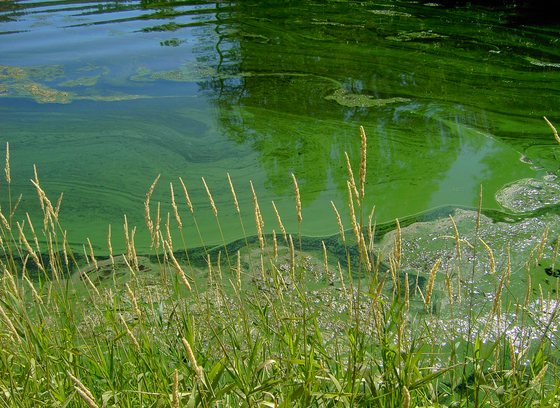Harmful Algae and Cyanobacteria
Harmful algae and cyanobacteria, sometimes called blue-green algae, can produce toxins (poisons) that can make people and animals sick and affect the environment. Learn more about them to keep you, your family, and your pets safe.

Information about Blue-Green Algae (Cyanobacteria)
If you, someone you know, or a pet has been in contact with or ingested water from an affected body of water you should contact your medical provider for additional guidance.
People can have adverse health effects from exposure if they:
- Accidentally ingest reservoir water (e.g., splashed onto face)
- Consume tainted fish flesh or internal organs
- Wade in or contact affected waters (e.g., while launching kayaks, canoes or boats)
People exposed to cyanotoxins through touching or swimming in contaminated water or breathing in droplets of contaminated air may experience irritation of the:
- Skin
- Eyes
- Nose
- Throat
- Lungs
People exposed to cyanotoxins by eating contaminated food or dietary supplements, or by swallowing contaminated water, may experience the following symptoms, depending on the cyanotoxin involved:
- Stomach pain
- Neurological symptoms (for example, muscle weakness, dizziness)
- Vomiting
- Diarrhea
If you, someone you know, or a pet has been in contact with or ingested water from an affected body of water you should contact your medical provider for additional guidance.
Treatment
Treatment is mainly supportive and symptom directed. There are no specific antidotes for cyanotoxins or specific treatments for illnesses caused by cyanobacteria and their toxins in humans.
Resources:
- Harmful Algal Blooms (Maryland Department of the Environment)
- Harmful Algal Blooms Map (Maryland Department of Natural Resources)
- Harmful Algal Blooms and Your Health (CDC)
- Preventing Pet and Livestock Illnesses Caused by Harmful Algal Blooms (CDC)
- Water Blooms (WSSC Water)